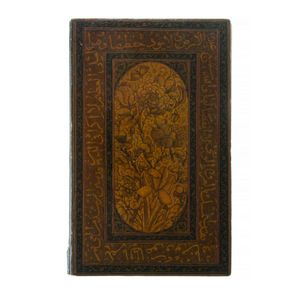Victorian leather cased Daguerreotype photograph
You must be a subscriber, and be logged in to view price and dealer details.
Subscribe Now to view actual auction price for this item
When you subscribe, you have the option of setting the currency in which to display prices to $Au, $US, $NZ or Stg.
- Victorian Period - The Victorian period of furniture and decorative arts design covers the reign of Queen Victoria from 1837 to 1901. There was not one dominant style of furniture in the Victorian period. Designers used and modified many historical styles such as Gothic, Tudor, Elizabethan, English Rococo, Neoclassical and others, although use of some styles, such as English Rococo and Gothic tended to dominate the furniture manufacture of the period.
The Victorian period was preceded by the Regency and William IV periods, and followed by the Edwardian period, named for Edward VII (1841 ? 1910) who was King of the United Kingdom and the British Dominions and Emperor of India for the brief period from 1901 until his death in 1910. - Daguerreotype - The first photographic image was achieved in 1814 by Frenchman Joseph Niepce, with first photographic with the camera obscura, an optical device that projects an image onto a screen. However, the image required eight hours of light exposure and later faded.
Joseph Niepce continued working on improving his invention Louis-Jacques-Mandé Daguerre, an artist. Niepce died in 1833, but Daguerre carried on, and at a meeting of the French Academy of Sciences in Paris on August 19, 1839 announced he had discovered a new method of photography, the daguerreotype which he named after himself. The daguerreotype process reduced the exposure time from 8 hours to 3 - 15 minutes.
In major cities, professional photographers of the time, known as daguerreotypists, invited celebrities and political figures to their studios, hoping that by displaying a selection of portraits in their windows, the public would be encouraged to be photographed.
However the popularity of the daguerreotype was short-lived, and its use declined in the late 1850s when the ambrotype, a faster and less expensive photographic process, became available. However the ambrotype still required the services of a professional photographer and it was not until the invention of Kodak's Box Brownie in 1900 that the public were able to shoot their own photographs.
Due to the short time (20 years) that the daguerreotype was popular, and the fact that the image was produced directly onto the plate, meaning there were no negatives, original daguerreotypes are scarce. Most daguerreotypes are portraits, with landscapes and street scenes being less less common.
This item has been included into following indexes:
Visually similar items

A Carlton Membership Season Ticket, 1874, maroon leather binding, (worn) 5.5 x 4.8 cm. Provenance: belonging to Dave Crone, and hence by decent to its current owner., Dave Crone was a VFL football player, having played a handful of games from 1915-1920, fo

A framed mosaic of Madonna & child 25 x 17.5 cm

Russian icon, of rectangular form, painted with religious scene depicting the birth of Christ, in rich tones of orange, red, blue and green and accented in gilt, 22 cm x 18.5 cm

Illuminated Qu'ran / Koran . Provenance: A former diplomatic family based in the ACT (collection formed in the 1950s & 60s); by descent to the current owner, height 16 cm
